Intel's Alder Lake could actually be a better overclocker than prior CPU generations
We haven't seen a CPU generation with much overclocking headroom in a long time, but Intel says Alder Lake might.
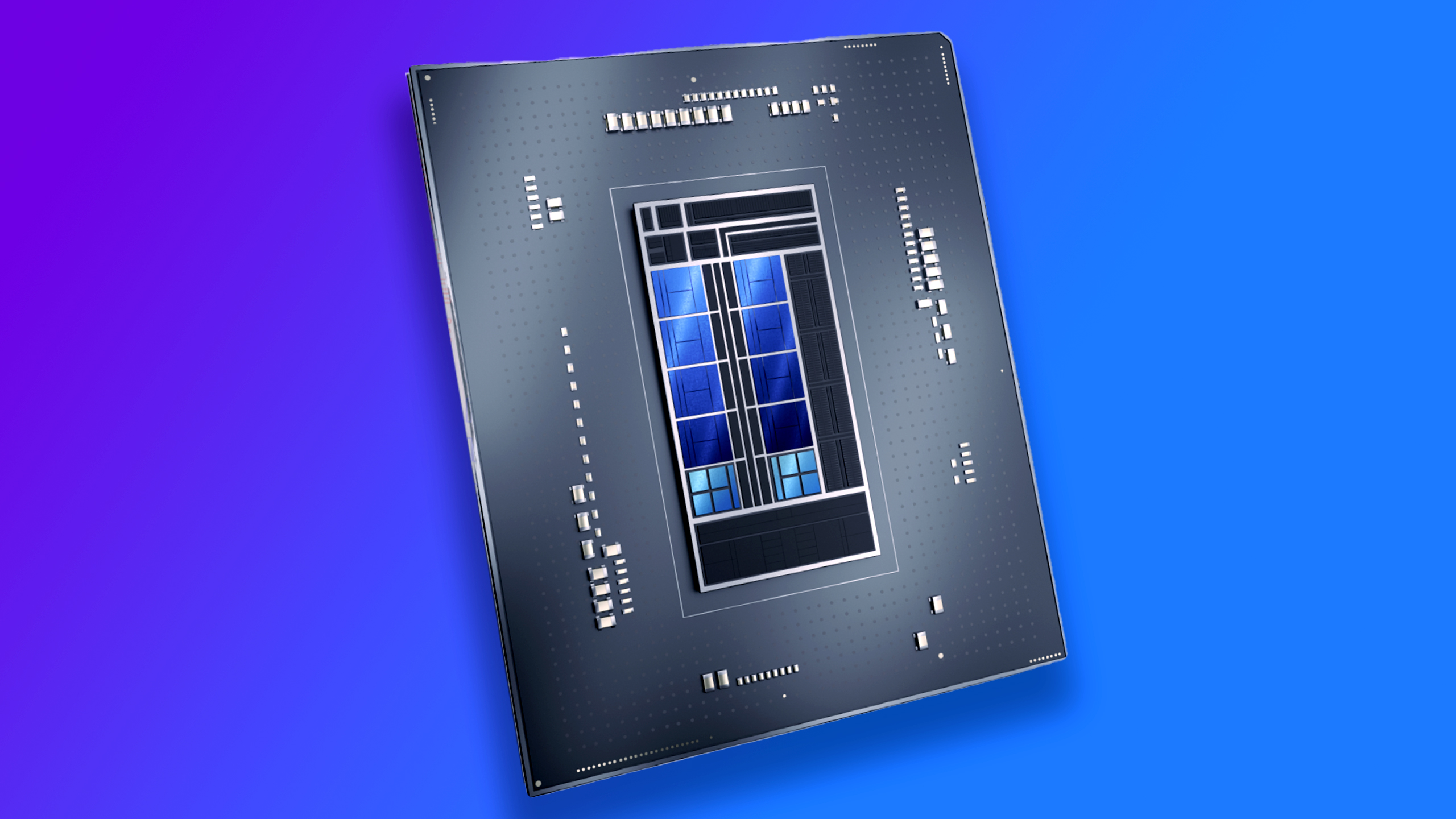
It's no secret that CPU overclocking, at least as we once knew it, is all but gone for your average gamer. Don't get me wrong, spilling LN2 on your processor and cranking up the clock speeds is still alive and well, but it's been a while since we've seen a CPU out of either Intel or AMD that isn't already cranked up to its limit right out of the box.
Well, with Alder Lake, Intel says that could change.
Now, the company prefaces this with "we'd like to leave this as a surprise and not overpromise", so try and keep a lid on how much overclocking headroom you can expect with Alder Lake. However, at a recent press event, Intel offered overclockers something of an olive branch.
Principle engineer of Intel's Overclocking Lab, Dan Ragland, told us that users "will not be disappointed" with the overclocking headroom on offer with the upcoming 12th Gen chips, and that "you will notice a leap forward in headroom."
More on that is to come at Intel's Innovation event, which is taking place today and tomorrow. The keynote will be happening momentarily from the publish date of this story, so we'll be keeping an eye on that for more on Intel's overclocking plans.
There's plenty that I can confirm for Intel Alder Lake overclocking right this moment, however.
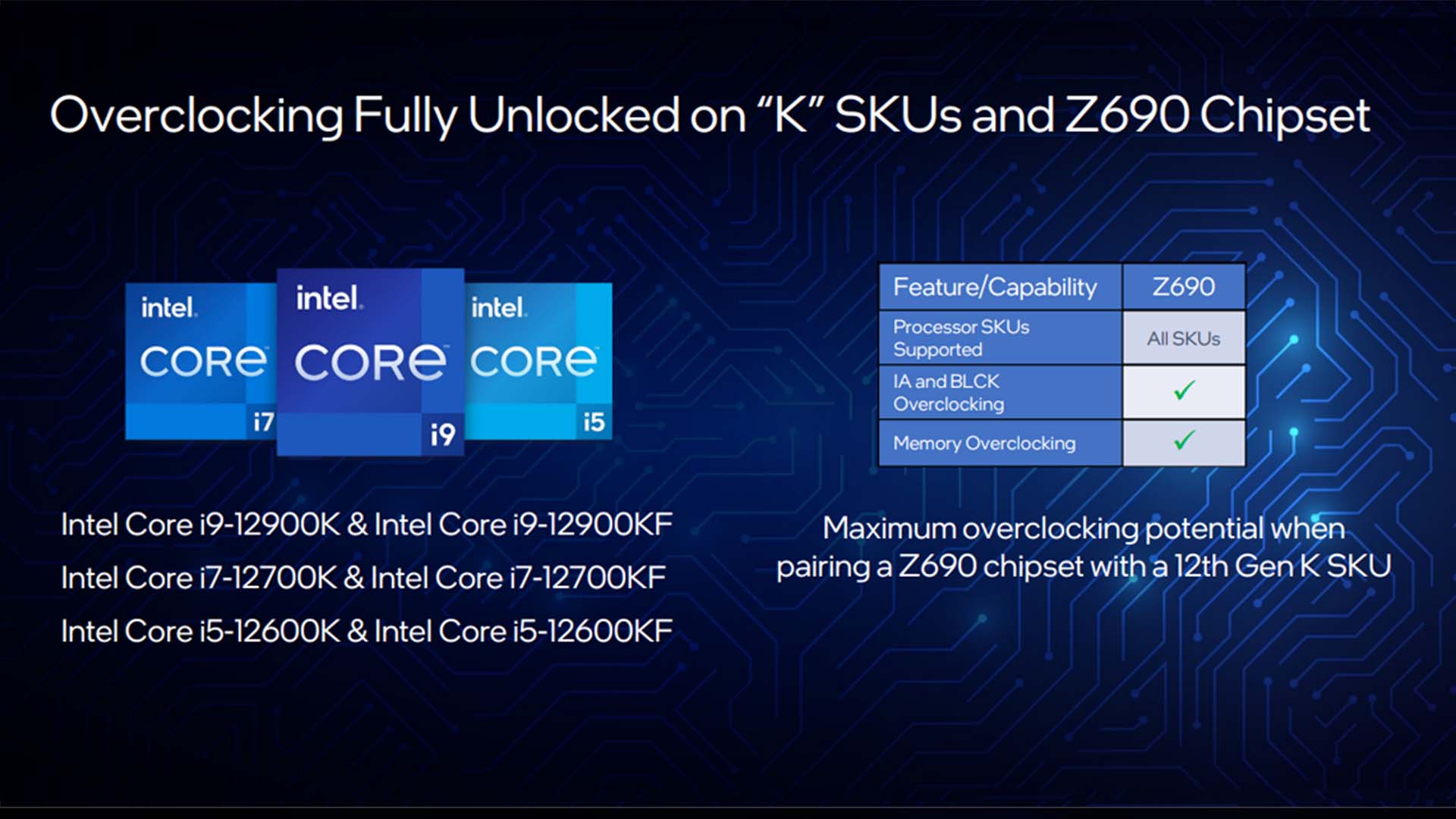
The team behind Alder Lake appears to have done plenty to keep overclocking at least a moderately viable option on its new hybrid chips.
Keep up to date with the most important stories and the best deals, as picked by the PC Gamer team.
For starters, the package has been adjusted for a thicker integrated heat spreader, a thinner STIM (Solder Thermal Interface Material), and a thin die. Intel says that makes for a thermal improvement over even its 10th and 11th Gen chips, which also improved the chip package thermally.
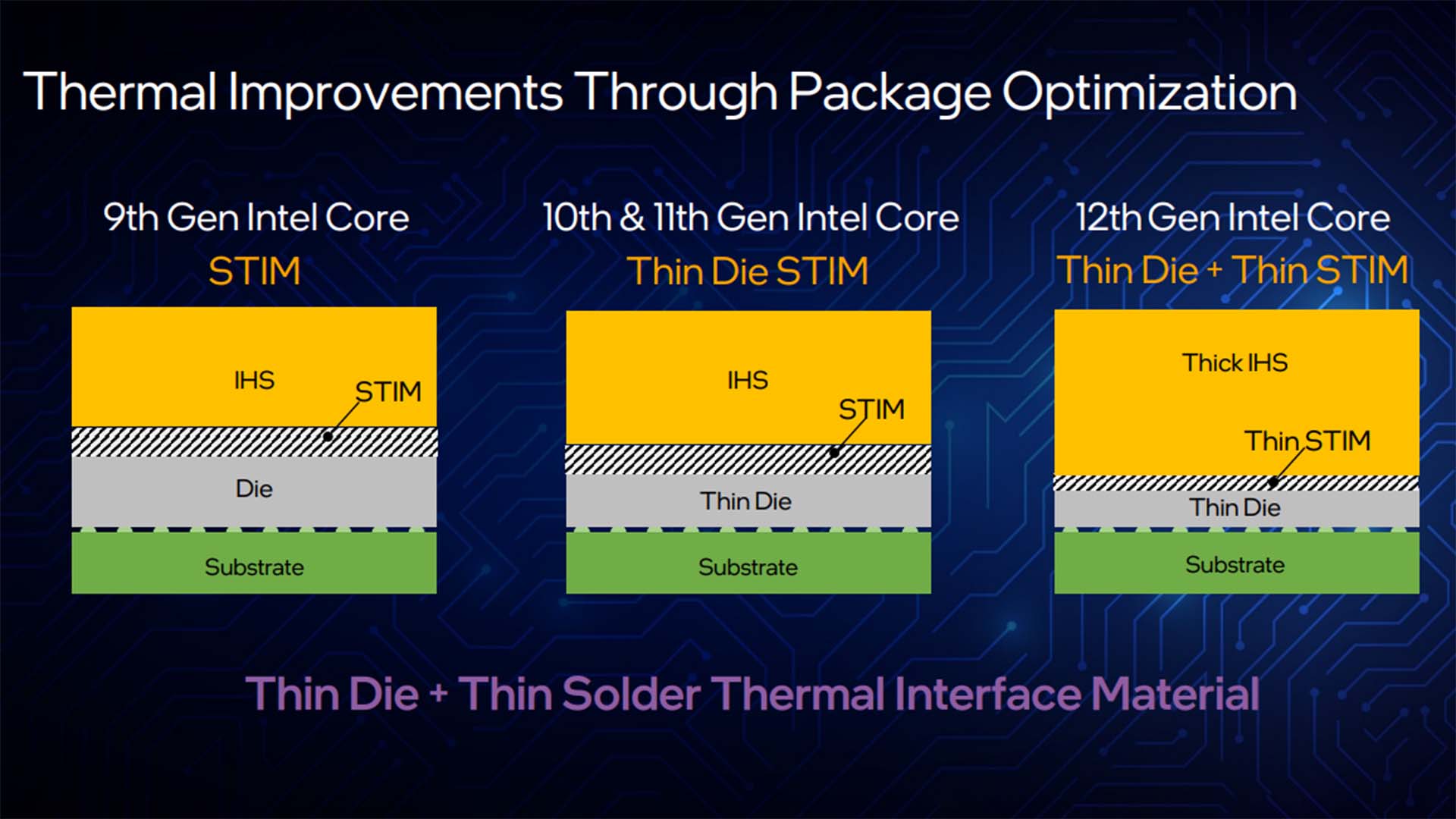
The biggest addition to the overclocking suite is the ability to adjust the core ratio of the Efficient Cores, which are themselves new with the 12th Gen chips. This will allow you to push the Efficient Cores beyond their stock speeds and potentially squeeze out some more performance while you're at it. Just bear in mind that the Efficient Core Ratio can only be adjusted at a block level, which means you'll be limited to tweaking four Efficient Cores at a time.
These same clusters of Efficient Cores also share L2 cache, so you can only imagine the chaos that would likely ensue if they were all running at different speeds.
Intel is also included more 'tuning knobs', as it calls them, with Alder Lake, including PLL overrides and per-core HyperThreading enable and disable switches. Similarly, you can also entirely disable a core, or seven, if you want to push for a single-thread benchmark record.
So a bit of something for your everyday overclocker and your enthusiast record-breaker, and perhaps then we'll also find the headroom leftover in the chip while at stock to put these features to good use. But that does beg the question: if there was performance on the table, how come Intel wasn't able to pull that out of its chips in the factory?
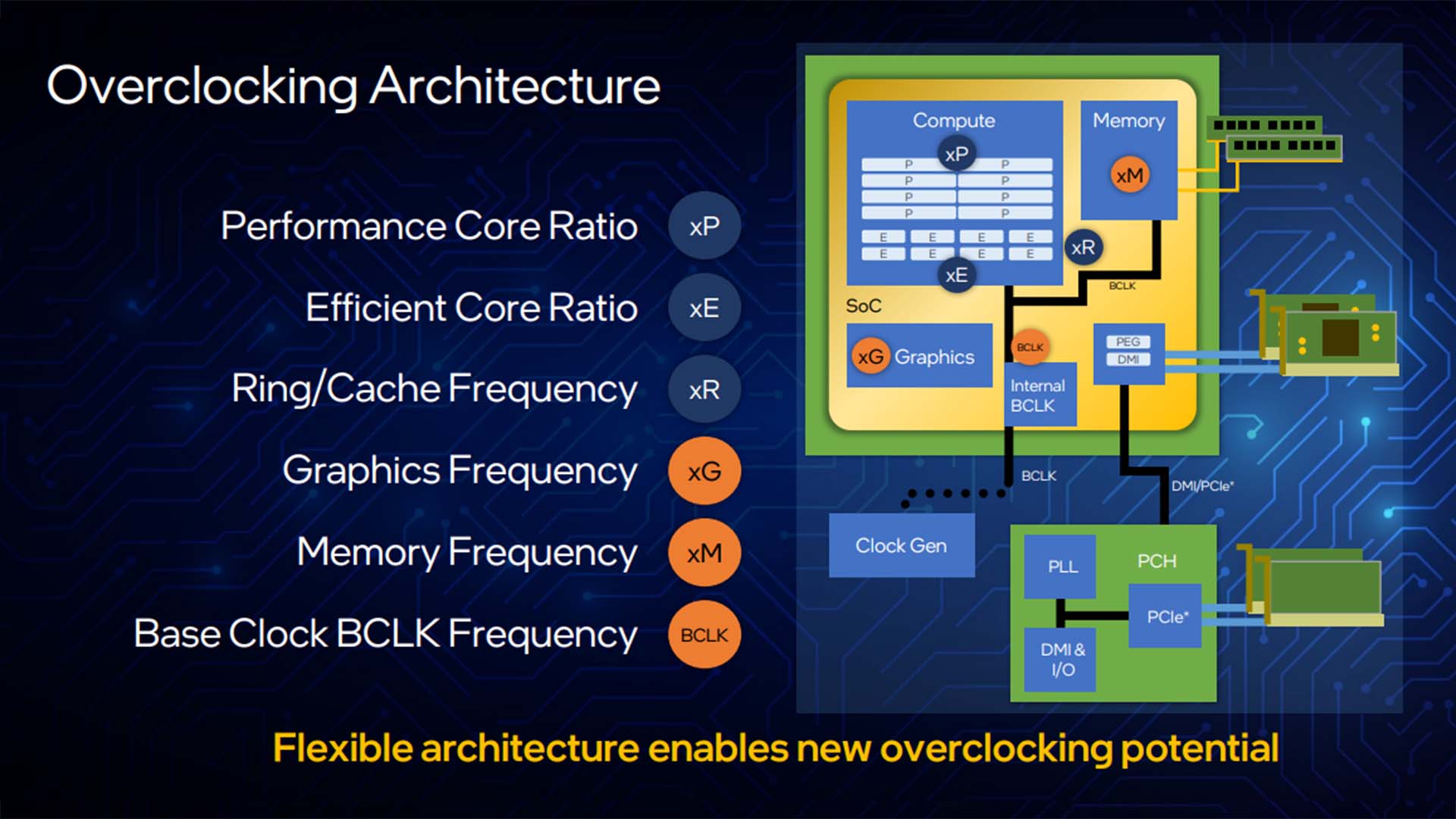
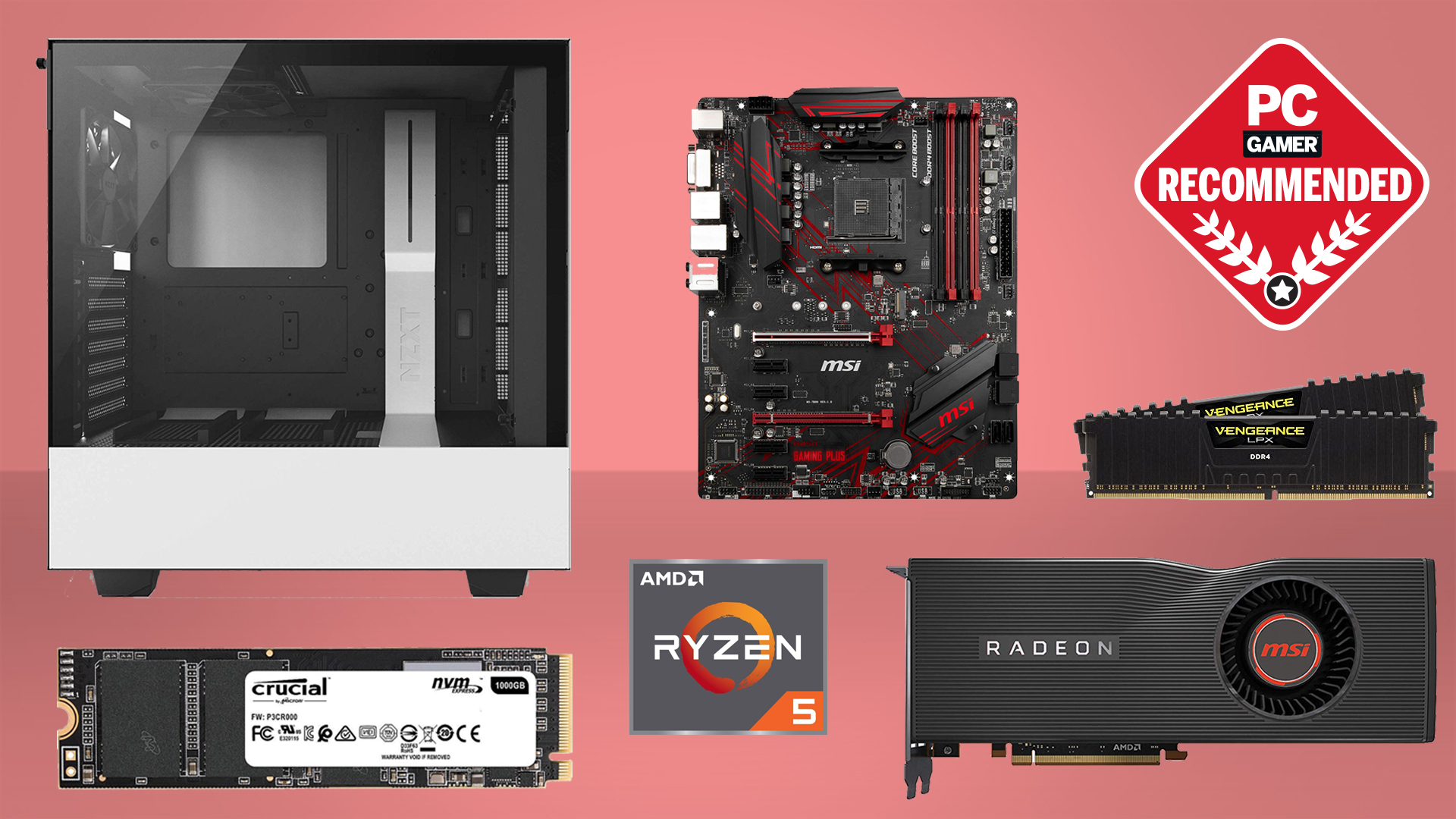
Best CPU for gaming: the top chips from Intel and AMD
Best graphics card: your perfect pixel-pusher awaits
Best SSD for gaming: get into the game ahead of the rest
Perhaps that comes down to process node variance—these chips will be our first on the desktop to use the Intel 7 process node. That or power concerns. I don't doubt that overclocking these Alder Lake chips will require a seriously beefy cooler. You can check out the full Intel 12th Gen Alder Lake specs in our recent story, but case in point the Core i9 12900K reaches a Turbo Power of 241W at times.
Even if you're not into the overclocking lifestyle—you know, living on the edge—there is the opportunity to crank your memory speeds up with Intel's new XMP 3.0 tech for DDR5 and its new Dynamic Memory Boost feature. Excited to see how those play out when it comes to gaming. Similarly, Intel says it shouldn't be too difficult to pull a little more out of Alder Lake with its One-click Overclocking in XTU, which will attempt to do most of the work for you.
"...from Conroe to Sandy Bridge to Skylake, 12th Gen is going to be one of those standout platforms, one of the leaps ahead. Whether it's our new Efficient Core overclocking, DDR5, XMP 3.0, the Dynamic Memory Boost Feature, or one-click overclocking with Extreme Tuning Utilities and Intel Speed Optimizer feature, we've got something for everyone," Ragland says.
There's not long to wait now until we can find out how Intel's exciting Alder Lake generation shapes up. Intel's 12th Gen will be with us from November 4, 2021, which is when we'll be able to put all this and more to the test.

Jacob earned his first byline writing for his own tech blog. From there, he graduated to professionally breaking things as hardware writer at PCGamesN, and would go on to run the team as hardware editor. He joined PC Gamer's top staff as senior hardware editor before becoming managing editor of the hardware team, and you'll now find him reporting on the latest developments in the technology and gaming industries and testing the newest PC components.

